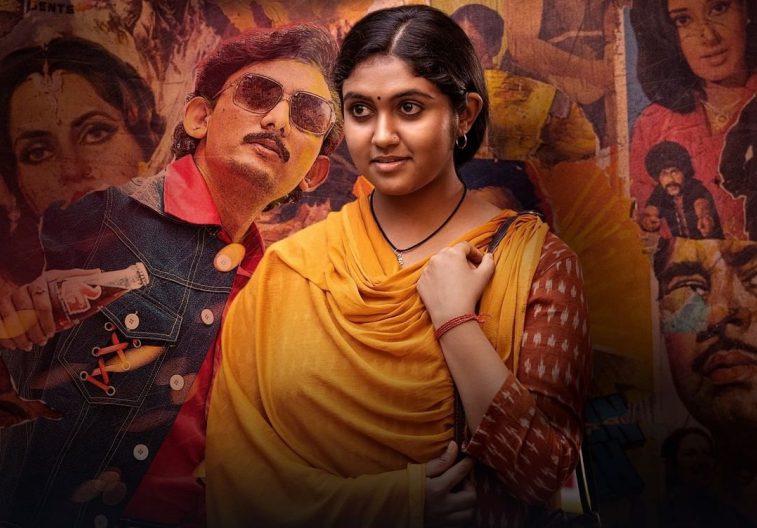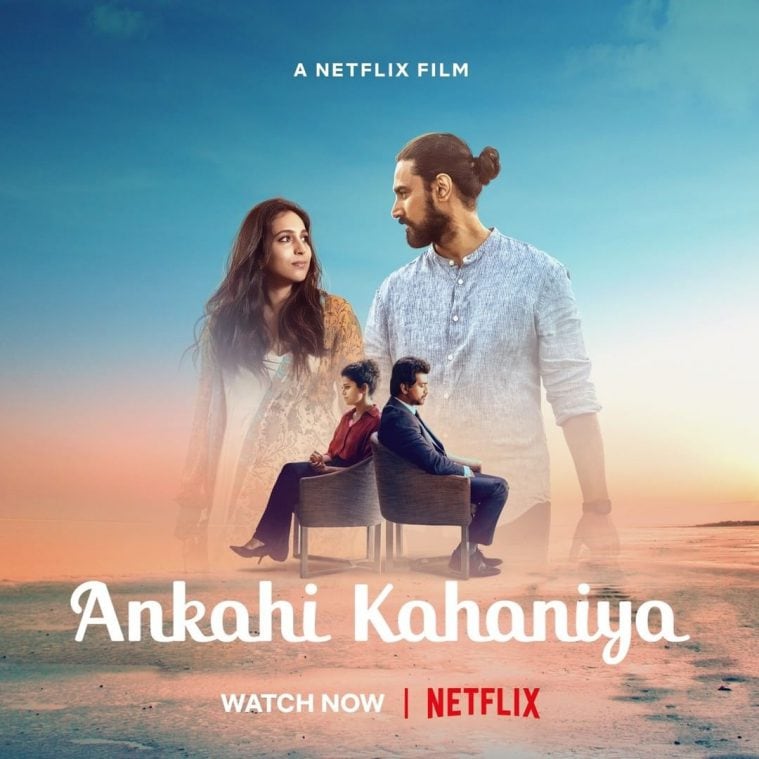Ankahi Kahaniya review: Netflix seems to be obsessed with the anthology format. We have had a tonne of them lately, with Ray, Navrasa, Ajeeb Dastaans and a host of others. We wonder why?
Ankahi Kahaniya creator: Saket Chaudhary, Abhishek Chaubey and Ashwini Iyer Tiwari
Ankahi Kahaniya cast: Abhishek Banerjee, Zoya Hussain, Kunal Kapoor, Nikhil Dwivedi, Palomi, Rinku Rajguru and Delzad Hiwale
Ankahi Kahaniya rating: 2 stars
Enough film reels, newsprint and now digital memories have been dedicated to documenting the looming ‘loneliness’ of the metro cities. Mumbai has always served as the big, bad wolf. ‘Mumbai main naukri mil jaati hai, par apni dil ki baat karne ke liye do saathi nahin milte’, as our protagonist Pradeep (Abhishek Banerjee) says in the first offering of the three-part anthology Ankahi Kahaniya, that streams from today on Netflix. It supposedly dwells on the overwhelming urge for love. Love. We keep coming back to this elusive feeling, which in modern times has reached mythical proportions, and remains slippery for more people than ever. Blame it on technology, or the rat race, or in recent times, the pandemic. But never before in human history has love been so out of reach for the average human.
The first part, directed by Ashwini Iyer Tiwari, deals with the story of a humble, shy Pradeep. He has come from a village in MP, and is stuck in the daily monotony of earning a wage as a salesperson in a ready-made garment store in Mumbai. While everyone around him is busy going on dates — right from his younger, slick co-worker who takes his girl to Juhu beach, to his roommate in his basti who is glued to his phone as he romances his lady love. Cupid finally takes pity and Pradeep falls hard for a female mannequin, who is brought to the store to display women’s clothing.
https://youtube.com/watch?v=pw1WuzTYM3Q%3Fversion%3D3%26%23038%3Brel%3D1%26%23038%3Bshowsearch%3D0%26%23038%3Bshowinfo%3D1%26%23038%3Biv_load_policy%3D1%26%23038%3Bfs%3D1%26%23038%3Bhl%3Den-US%26%23038%3Bautohide%3D2%26%23038%3Bwmode%3Dtransparent
He names her Pari, takes her to the beach, buys her gifts, all with a huge grin on his face. All hell breaks loose when the store owner sees video footage of him romancing the mannequin. Pradeep faces a lot of flak for his ‘depravity’. But why is it seen as moral corruption? Japan has an entire subculture around love dolls, which offer all sorts of companionship to the increasingly solitary Japanese population. And for someone like Pradeep, who represents many such youngsters from the Indian hinterland, who are unable to deal with the slick demands of a bustling metropolis, love dolls, can perhaps be a useful stepping stone, enabling them with a confidence that will help them in real life situations.
But, maybe we are being futuristic. Abhishek Banerjee channels Pradeep a little too well, it’s him in ‘Hathoda Tyagi’ mode, minus the anger and the violent hammer. Why can’t directors’ channel good actors in new ways, instead of typecasting them? We are worried Banerjee might just head the Pankaj Tripathi way, where all they ask him to play is this young, uncouth village person, just as Tripathi has been typecast as a ‘Hindi hinterland character’ with his signature ‘neck move’.
The second part too is based in Mumbai. Love ensues when the errand boy at dilapidated single-screen theatre meets a young girl trapped in an angry household. Rinky Rajguru’s Manjari is reduced to doing chores at home and her only escape is watching Marathi flicks at the local theatre. Glances are exchanged, dates are made, ice cream is eaten and walks taken on the seashore. But nothing is said, explicitly. The two have to tackle their own harsh realities, as they try and make a break from their existing lives. The second part has too many similarities with Sairat, which made Rajguru a household name. Her costume, her body language are all borrowed from the second half of Sairat. One expected better from director Abhishek Chaubey, but his narrative is the only one that sticks to the ‘unsaid’ part of the brief.
The third part of Ankahi Kahaniyan, takes us to swanky, plush Mumbai where meetings take place at the cosy Taj Mahal Tea House, and offsites take you to beach resorts. We meet Tanu and Manav, who have come together because their respective spouses are having an affair with each other. In a complete invocation of cult classic In the Mood for Love, two cuckolded spouses try to retrace the affair of their partners. Been there, done to death. Saket Chaudhary tries to give a different spin to the narrative, but it’s too much on the nose and frankly the writing drags.
The anthology was supposed to take us into the not-so-glamorous world of heartbreak, and a life beyond rose tinted glasses. Ankahi Kahaniyan evokes no emotion, none at all. The dialogue writing is underlined, the message is often delivered in a preachy, obvious way. The anthology wouldn’t have looked out of place in the 2000s, but it won’t work in 2021.
Also, Netflix seems to be obsessed with the anthology format. We have had a tonne of them lately, with Ray, Navrasa, Ajeeb Dastaans and a host of others. We wonder why? The whole idea of streaming services was to get highly detailed narratives, which would give everyone an immersive storytelling experience. We understand ‘content’ can work in all shapes and sizes, but none of the anthologies have really worked, have they? Yet they seem to have a never-ending supply of these. Anyway, feel free to skip this weak, slapdash effort from the makers. The stories in Ankahi Kahaniyan, would have been better left unsaid.
Source: Read Full Article






